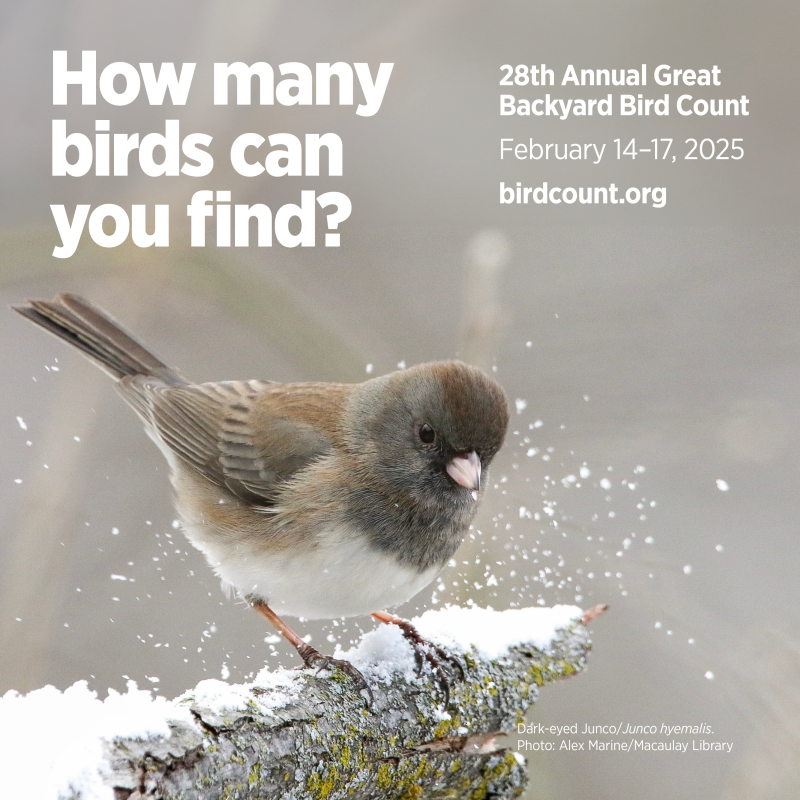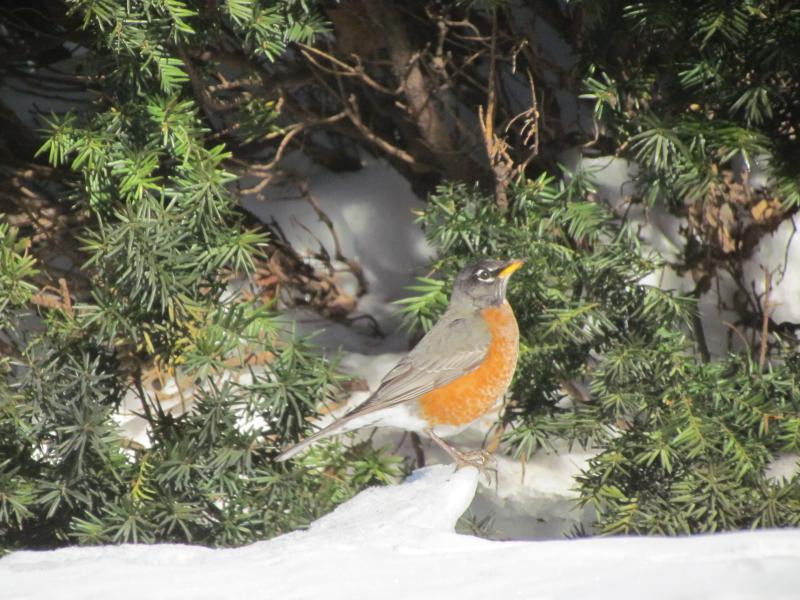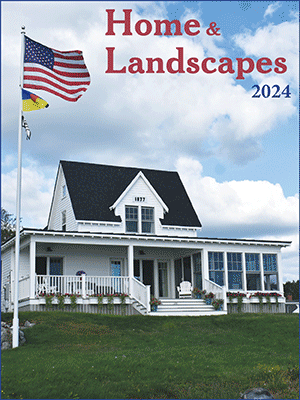Join 600,000 Bird Enthusiasts This Weekend
 The authors will be participating in the Great Backyard Bird Count this weekend and hope you will participate, too!
The authors will be participating in the Great Backyard Bird Count this weekend and hope you will participate, too!
 Some people are surprised to learn the some American robins are around during winter, feeding off dried fruit instead of worms. This year's Great Backyard Bird Count will help to understand just how widespread they are this winter, not only in Maine but across the U.S. and Canada. Courtesy of Jeff Wells
Some people are surprised to learn the some American robins are around during winter, feeding off dried fruit instead of worms. This year's Great Backyard Bird Count will help to understand just how widespread they are this winter, not only in Maine but across the U.S. and Canada. Courtesy of Jeff Wells
 The authors will be participating in the Great Backyard Bird Count this weekend and hope you will participate, too!
The authors will be participating in the Great Backyard Bird Count this weekend and hope you will participate, too!
 Some people are surprised to learn the some American robins are around during winter, feeding off dried fruit instead of worms. This year's Great Backyard Bird Count will help to understand just how widespread they are this winter, not only in Maine but across the U.S. and Canada. Courtesy of Jeff Wells
Some people are surprised to learn the some American robins are around during winter, feeding off dried fruit instead of worms. This year's Great Backyard Bird Count will help to understand just how widespread they are this winter, not only in Maine but across the U.S. and Canada. Courtesy of Jeff Wells
A colleague at the Natural Resources Council of Maine headquarters called Allison recently.
An urgent work-related communication?
No, he had seen a flock of plump robins, their deep rust-red breasts gleaming against the white snowy backdrop. They had shown up outside his window at their Augusta office building. “What are robins doing here now?” he asked.
This colleague wouldn’t call himself a birder, but he is one of the more than 100 million people in the U.S. who are interested enough in birds to pay attention to them and know at least some bird species.
Some American robins do indeed winter in Maine, feeding not on worms, of course, but on dried-up crabapples and berries that are often still hanging on ornamental plantings.
A great place to learn more about how widespread robins have been this winter, not only here in Maine but across the continent, is through a remarkable event running from Friday, Feb. 14 to Monday, Feb. 17.
Called the Great Backyard Bird Count (GBBC) and hosted by the National Audubon Society, Cornell Lab of Ornithology and Birds Canada, it’s one of the world’s largest community science events. Last year an estimated 642,003 people participated in the GBBC, submitting 384,416 bird checklists from all but a handful of countries around the world. We helped create and establish the GBBC in 1998 and remember well how excited we were the year of the event’s launch (pre-eBird!) to have received 13,500 checklists from participants in the U.S. and Canada.
Last year, the 26th year of the event, more than 200,000 checklists were submitted from the U.S. alone!
It’s still amazing to think that it’s possible to galvanize that many people to count birds and submit their sightings to get a snapshot of the status and distribution of birds over a four-day period in February. Even more amazing has been the global growth of Great Backyard Bird Count. Birders in India submitted more than 65,000 checklists—the second-most after the U.S. Colombian birders submitted 3,400 checklists and, not surprising given that Colombia is the most bird diverse nation in the world, also found more species than any other country with 1370.
Right here in Maine, enthusiasts submitted 2,270 checklists during last year’s GBBC. Participants tallied 128 species during those four mid-February days. Lincoln County birders submitted an impressive 142 checklists and found an equally impressive 73 species.
The wonderful thing about the Great Backyard Bird Count is that it was created to be very easy for anyone to participate. You can do it alone or with friends or family. Or even make it into a party! You can keep track of birds at your feeders for 15 minutes and go down to a patch of open water and count the ducks, too, if you like! And go to multiple locations and count the birds. You can participate once or during each of the four days of the count—we enjoy discovering how the numbers and diversity of birds change each day.
We’re hoping our colleagues—and friends and family members—will send in sightings of the birds they see this coming weekend, whether it be robins or anything else. It’s a great way to feel part of the amazing global community of bird lovers. We hope you’ll participate, too!
You can find more information and participate at: https://www.birdcount.org/
Jeffrey V. Wells, Ph.D., is a Fellow of the Cornell Lab of Ornithology and Vice President of Boreal Conservation for National Audubon. Dr. Wells is one of the nation's leading bird experts and conservation biologists. He is a coauthor of the seminal “Birds of Maine” book and author of the “Birder’s Conservation Handbook.” His grandfather, the late John Chase, was a columnist for the Boothbay Register for many years. Allison Childs Wells, formerly of the Cornell Lab of Ornithology, is a senior director at the Natural Resources Council of Maine, a nonprofit membership organization working statewide to protect the nature of Maine. Both are widely published natural history writers and are the authors of the popular books, “Maine’s Favorite Birds” (Tilbury House) and “Birds of Aruba, Bonaire, and Curaçao: A Site and Field Guide,” (Cornell University Press).




































